Oak Hill History
The area now known as Oak Hill was initially known as Live Oak Springs in the 19th century. The land was awarded to William Cannon by the Mexican government in 1835, attracting settlers into the area. In 1865, unsuccessful attempts were made to change the community's name to Shiloh, after the American Civil War battle. In 1869, however, the community was given the name Oatmanville. Following the Civil War, the cedar forests around Oatmanville attracted settlers, particularly from the Appalachian Mountains, due to high demand for lumber-related production. Due to the increased demand for cedar, localized conflicts broke out between woodcutters. In 1870, a post office named Oak Hill was established, though the community would not immediately adopt that name.
During the construction of the Texas State Capitol in Downtown Austin during the 1880s, stone quarries near the community were used for the capitol building's construction, resulting in a boom in the community's economy. The construction project also spurred the creation of the Austin and Oatmanville Railway, which was purposed to ship limestone from the community to the city, and was later abandoned in 1888. In 1904, Oak Hill's population grew in excess of 200 people, doubling by the 1970s. In 1910, the local post office was discontinued, with mail forwarding to the city of Austin instead. Nearly a century later in 2000, the area defined as Oak Hill was absorbed into Austin's city limits.
From Wikipedia

1830's
In the early 1830's, the areas we now know as Travis County, Austin, and Oak Hill were all a part of Mexico. Within this region, the area along the Colorado River was only sparsely populated by pioneers from the U.S. partly due to conflicts with the native Commanches. In 1835, one such settler, William Cannon, obtained a land grant from the Mexican government that stretched from Williamson Creek to Slaughter Creek, an area which comprised the heart of what we now know as "Oak Hill".
In 1836, after the battles of the Alamo and San Jacinto, the Republic of Texas was formed, and in 1939 the City of Austin was founded and named the Republic's capital, drawing many more settlers to the region.
1840's
In 1846, a year after Texas became the 28th state of the United States, William D. Glasscock and his family arrived from Mississippi and settled just north of Williamson Creek in a pecan grove. The Glasscocks are credited with being Oak Hill's first settlers.
In 1848 Glasscock sold some of his land to Norwegian immigrant John Ernest Mowinkle and the Oak Hill community was born. Any conflicts with the native Comanches had dissipated by then, and by the time the Glasscocks settled down there were less than 200 individual Comanches in the area, and possibly as few as 30 when John Mowinkle settled in.
1850's
Settlers continued to arrive in the area and, in 1856, started a school in a log cabin, naming it "Live Oak Springs". As was typical in that period, the community took the school's name giving it its first name: "Live Oak Springs". This name was used for nine years until the Civil War ended.
1860's
In 1865, a log cabin school named the “Shiloh" school was built to replace the Live Oak Springs school, and the community was called Shiloh. A short time after that, the school was renamed "Live Oak" giving its name, as well, to the community.
During this period, poor settlers, attracted by the abundance of wood, water, and game, began to move into the area. Many of these settlers came from Appalachia and brought their mountain culture with them. They scraped a living from the rugged hill country by cutting cedar, building stonewalls and fences, and making charcoal and moonshine, and were referred to as "cedar choppers" or "charcoal burners".
In 1869, a major landowner named B. F. Oatman had settled in the area and the school and community were renamed "Oatmanville".

1870's
In 1870 John Eaton Campbell, who homesteaded south of Austin, was a county surveyor who surveyed the town of Oatmanville for B. F. Oatman. Campbell's great-great grandson is James Morris White, founder and owner of the famous “Broken Spoke.”
Also in 1870, a US post office was established and given the name “Oak Hill”. This began a period of increased commerce and settlements in the area. One such settler, W. K. Beckett, owned an area of pecan and live oak trees called “The Grove” or “The Beckett Grove” located alongside Williamson Creek. This was traditionally the last stop for cattle drives heading through Austin, and farmers and ranchers would spend the night there on their way to and from Austin on buying and selling trips.
1870 also ushered in a Texas Ranger by the name of James Andrew Patton to the region. Patton became quite entrenched in the community building a general store called "The Old Rock Store" store by hand in 1879. Patton's great grandson is the same James Morris White who founded the "Broken Spoke".

US Post Office map (1873)
1880's
When the “Old Stone Capitol” in Austin burned down in 1881, plans were made to build a new capitol that somewhat resembled the one in Washington, D.C., and to construct the new building from white limestone, quarried at Oatmanville. Oatmanville's population had grown to about 75 residents by that time.
W.K. Beckett leased 1000 acres of his land in the Beckett Grove to be used as the quarry. In 1883 a narrow-gauge spur railroad called the Oatmanville-Austin Railway was built from the Beckett place to the Capitol grounds to carry the limestone. This project promised great things for Oatmanville, and several businesses opened to serve those involved. Due to cost and labor issues, around 100 State of Texas convicts were sent to the quarry in the Fall of 1885 to supply labor, giving the area the name "Convict Hill". Because of its softness and impurity it was determined that the limestone from Oatmanville wouldn’t work for the exterior, and it was reserved for the interior work. After the capitol was finished, quarry operations shut down in 1888 and all that remains now is a sinkhole and two iron bars driven into the ground.

Convict Hill Quarry (1888)
1890's
On August 16, 1897, the first trustees for the Oatmanville School were elected and charged with building a new school. Trustee Peter Thompson gave two acres of land and Columbus Patton, J. A. Patton's son, supervised the construction of a frame, one room building which served as both the new Oatmanville school as well as a church on Sundays.
Patton's Old Rock Store was rebuilt of stone in 1898 and today houses the Austin Pizza Garden on US 290.
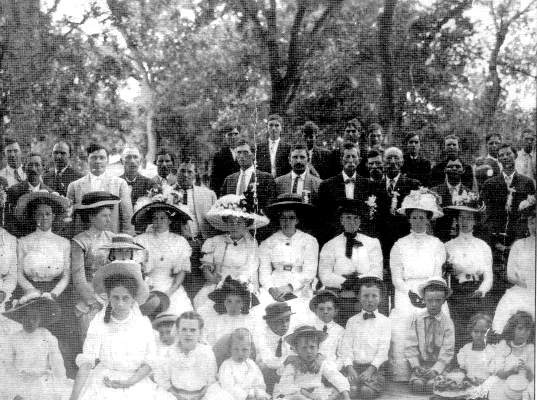
Gathering at the Beckett Grove (1890's)
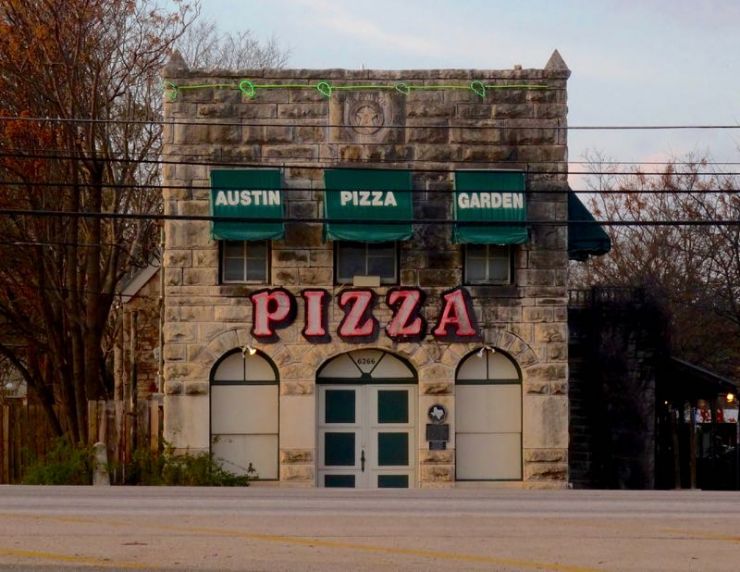
Patton's old rock store
1900's
In 1900 the community's name was officially changed to "Oak Hill".
By 1904, Oak Hill's population had grown in excess of 200 people.

Area map (1901)
1910's
The Oak Hill post office was discontinued in 1910, and any mail for the community was sent to Austin.
Sometime after that, the Patton homestead next to the Rock Store was built. It held the only telephone in the area at one time.
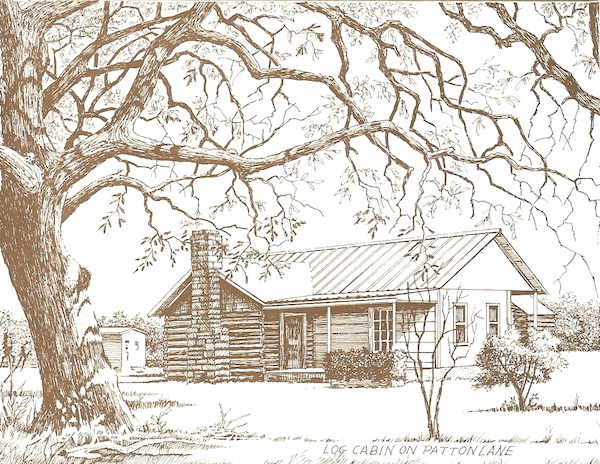
1920's
The Oak Hill Elementary School was opened in 1923.
Joe Tanner had his blacksmith shop on Joe Tanner Lane and US 290 where he shod horses and welded. Folks would bring their horses to get shod at Joe Tanner's and stop over at the Patton's across the street to visit.

The old Oak Hill Elementary School
1930's
The Oak Hill Elementary School expanded in 1933.
In 1935, Norwall and Mary Mowinkle, son and daughter of John Mowinkle, formed the Oak Hill/Cedar Valley Pioneer Association. which was dedicated to the idea of preserving the history and heritage of the two neighboring communities.
Oak Hill first got electricity in 1937.
A Baptist Church was built in 1937, replacing the Sunday Schools held in Peter Thompson’s blacksmith shop, with the attendees sitting on nail kegs

Buchanan Dam provided power to many rural communities
1940's
In the 1940s Archie Patton opened a dirt racetrack called “Oak Hill Downs.” At first plow horses, donkeys, and mules raced there, but later buggies and roadsters were brought in.
The land was later sold to Motorola.
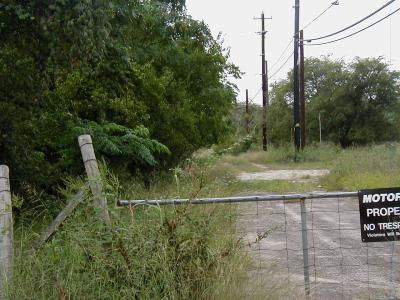
Site of "Oak Hill Downs"
1950's
The Oak Hill Elementary School expanded in 1953 and consolidated with the neighboring community Cedar Valley School.
In 1957 Oak Hill became the site of a rodeo, held every weekend, giving rise to Oak Hill being referred to as “the rodeo and horse racing site in southwestern Travis County."
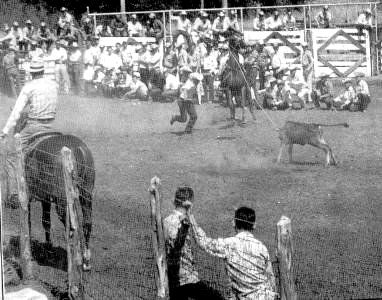
1960's
In 1961 Oak Hill and nearby Manchaca joined forces to form a rural high school district, which was annexed by Austin ISD in 1967.
When LBJ came to office in 1963, Southwestern Bell installed new equipment. Until then, Oak Hill only had party lines.
There was only one motel in Oak Hill for many years. The Heart of Texas Motel was opened in 1966.
The Oak Hill Volunteer Fire Department was founded in 1968. It has gone through two district name changes since then.
1970's
In the 1970s the population of Oak Hill was listed at 425.
In 1971 the school was located in a limestone building way out in the country, in the middle of farmland. There were nine teachers in the school and goats and chickens would occasionally have to be chased off the road for the one school bus to get through.
The City of Austin started annexing Oak Hill in 1975 beginning with Western Oaks and West Creek.
1980's
The 1980's was a busy decade for roads with the following roads being built or modified: Southwest Parkway, MoPac, US 290, Tx 71, Slaughter Lane, FM 1826.
The Pinnacle Tower was built in the early 80's by Angerman Investments. Originally the design called for twin towers but the economy decline of the late eighties reduced it to a single tower.
In 1982 Lady Bird Johnson created a national wildflower center research center as part of her national beautification efforts.
In 1984 The City of Austin annexed Scenic Brook West, Windmill Run, and in 1985 Oak Park, Oak Acres, Valley View Acres, Convict Hill, Legend Oaks, and most of Travis Country.
In 1985 the new J. A. Patton elementary school was opened in Oak Hill, the Oak Hill Volunteer Fire Department became Travis County Rural Fire Protection District #6, and OHAN, the Oak Hill Association of Neighborhoods, was formed.
In 1986, the Austin Transportation Study (ATS), now known as the Capital Area Metropolitan Planning Organization (CAMPO), adopted a plan to extend Loop 1 from US 290 south to the proposed SH 45. The Texas Transportation Commission amended its designation of Loop 1 to include the extension south to SH 45, consistent with the revised ATS plan. Construction of the extension concluded in 1994, largely completing the MoPac Expressway as it exists today.
In 1988 James Bowie High School opened and is the largest Austin Independent School District High School with over 60 acres of land in Southwest Austin.
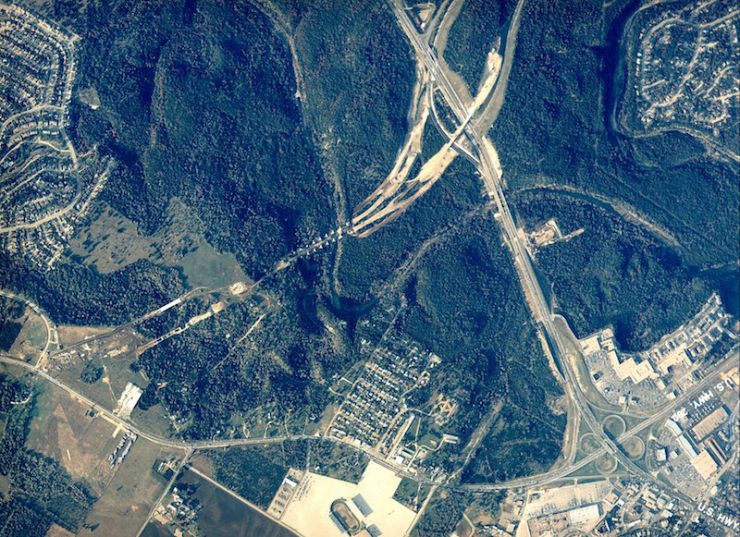
MoPac construction in 1984
1990's
The 1990's saw the completion of MoPac South, Southwest Parkway, and SH45 to RM 1826, and the population of Oak Hill more than doubled.
In 1991 Austin Community College purchased the Pinnacle Tower.
1992, the Oak Hill Fire Department became the current Travis County Emergency Services District #3 and Dick Nichols Park opened.
Circle C Ranch was annexed by the City of Austin in 1997.
2000's
In 2000, the City of Austin completed its annexation of the eastern half of Oak Hill, and the MoPac overpass at 290/71 is completed.
In 2005 the MoPac overpass at William Cannon was completed and CAMPO voted to remove the MoPac bridge over William Cannon from the toll road plan.
2010's
In 2012, the Flyovers at MoPac and US 290 are completed.
You can read more about Oak Hill History at the Oak Hill Gazette's History archives.
